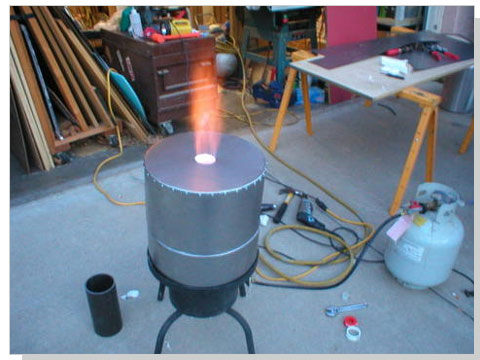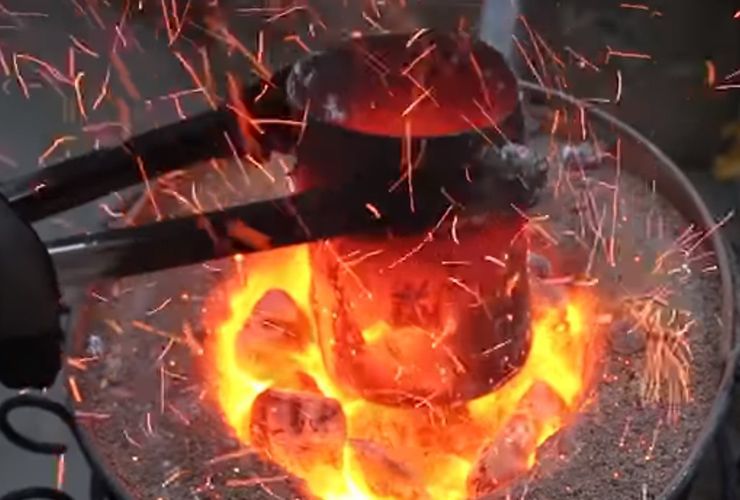How technology and skill shape every Metal Casting outcome
Discover the Ingenious Methods Made Use Of in a Metal Foundry for Superior Casting Results
In today's competitive manufacturing landscape, metal foundries are significantly taking on cutting-edge techniques to improve spreading results - Metal Casting. Advanced computer simulations enable for precise modeling of liquified metal habits, while 3D printing enables fast production of complicated mold and mildews. In addition, green materials and automation streamline operations. These growths promise considerable enhancements in effectiveness and quality assurance. However, the effect of these technologies on sustainability and production techniques remains to be completely discovered
Advanced Computer System Simulations in Metal Casting
Advanced computer system simulations have revolutionized the metal casting process by improving accuracy and performance. These innovative devices permit designers to produce digital designs of actors elements, enabling them to forecast the habits and assess of liquified metal throughout the spreading stage. By mimicing different parameters such as temperature, flow price, and cooling rates, makers can identify prospective problems before physical manufacturing begins.
This aggressive method decreases waste and minimizes expensive errors, ultimately causing boosted product high quality. In addition, simulations facilitate the optimization of mold and mildew designs, guaranteeing that they fulfill the certain requirements of each project. The combination of computational fluid characteristics (CFD) and finite element evaluation (FEA) further contributes to the accuracy of these simulations, giving insights that were formerly unattainable. Because of this, progressed computer system simulations have become an indispensable component of contemporary metal foundries, considerably advancing the industry's capacities.
3D Printing for Molds and Patterns
3D printing has actually become a groundbreaking strategy for developing molds and patterns in the metal foundry industry. This innovation makes it possible for the quick manufacturing of complicated geometries that traditional manufacturing approaches struggle to accomplish. By utilizing additive manufacturing, foundries can produce detailed designs with minimized preparations and material waste. The capability to produce molds as needed permits greater versatility in design versions, assisting in faster prototyping and adjustments.
Additionally, 3D printing can use a variety of materials, consisting of plastics and metals, customized to specific casting needs. This adaptability enhances the accuracy of mold and mildews, causing superior casting end results with improved surface area coatings. Furthermore, the reduction in the variety of parts required simplifies assembly procedures, even more optimizing manufacturing effectiveness. As foundries remain to embrace 3D printing, they are positioned to redefine market requirements, leading the way for innovation and improved efficiency in metal casting operations.
Eco-Friendly Materials and Processes
As the metal foundry industry deals with boosting stress to minimize its environmental footprint, the adoption of green products and processes has actually come to be essential. Shops are currently discovering lasting choices to typical products, such as using recycled steels and bio-based binders. These products not just lessen waste but also reduced energy usage throughout manufacturing.
Furthermore, improvements in sand casting techniques have caused using synthetic sands that are much less unsafe to the atmosphere. Foundries are also implementing cutting-edge processes like liquified metal therapy that decreases discharges and improves the quality of cast items.
Additionally, water-based finishings have actually changed harmful solvents, promoting a safer work atmosphere (Aluminum Foundry). By integrating these green methods, metal foundries can considerably reduce their environmental effect while preserving high-quality casting outcomes. This shift not just profits the atmosphere yet also aligns with the growing consumer need for lasting manufacturing services
Automation and Robotics in Foundry Procedures
While the metal foundry industry accepts technology, the integration of automation and robotics is transforming procedures greatly. Automated systems simplify processes such as mold and mildew making, metal pouring, and casting finishing, greatly improving efficiency. Robotics help with the handling of hefty materials, lowering the risk of office injuries and guaranteeing much safer atmospheres.

Further, the usage of automated assisted vehicles (AGVs) maximizes material transport within centers, making sure prompt distribution of elements to proper workstations. By applying these modern technologies, foundries can adjust to varying demands with greater dexterity, inevitably bring about boosted productivity and competitiveness in the marketplace. As automation and robotics proceed to advance, they hold the possible to redefine conventional foundry practices and drive further improvements in casting techniques.
Real-Time Monitoring and High Quality Control Techniques
The improvements in automation and robotics have actually paved the means for a lot more advanced approaches to quality guarantee in metal foundries. Real-time tracking systems utilize innovative sensors and data analytics to track essential criteria throughout the casting process. These systems continually assess variables such as More Info pressure, temperature, and product make-up, allowing prompt discovery of discrepancies from developed criteria.
Quality control methods currently incorporate maker understanding algorithms that evaluate historical data to forecast potential problems before they happen. This positive technique lessens waste and boosts total manufacturing effectiveness. Additionally, incorporated comments click here for more loops enable rapid changes, making certain that each spreading meets stringent top quality requirements.
The application of digital doubles-- virtual replicas of physical properties-- has actually likewise revolutionized quality guarantee, permitting designers to mimic and enhance processes in real-time. With each other, these innovative methods considerably enhance the integrity and top quality of castings, setting new sector criteria in metal foundry operations.
Frequently Asked Questions
What Kinds of Metals Are Commonly Cast in Factories?
Commonly cast steels in foundries include light weight aluminum, bronze, brass, and iron. Each metal shows special residential or commercial properties, making them appropriate for numerous applications, such as vehicle components, equipment, and artistic sculptures, enhancing their adaptability in production.

For how long Does the Casting Process Commonly Take?
The spreading process commonly takes several hours to days, depending on aspects such as the intricacy of the mold and mildew, type of metal used, and air conditioning requirements. Each stage affects the overall duration considerably.
What Precaution Remain In Area for Foundry Workers?

How Are Defects in Castings Identified and Addressed?
Issues in castings are identified via aesthetic examinations and non-destructive screening methods. When spotted, foundry employees address them by improving processes, adjusting material compositions, and implementing rehabilitative procedures to guarantee quality and conformity with requirements.
What Is the Cost Array for Metal Casting Providers?
The expense range for metal spreading solutions normally ranges $1 to $10 per pound, depending on factors such as product type, complexity of the layout, and production volume, influencing general pricing substantially.
In today's competitive manufacturing landscape, metal foundries are significantly taking on cutting-edge methods to boost spreading results. As the metal foundry market faces raising stress to decrease its ecological footprint, the fostering of environment-friendly materials and procedures has come to be vital. Foundries are currently exploring sustainable options to traditional materials, Find Out More such as using recycled steels and bio-based binders. By incorporating these environment-friendly practices, metal foundries can markedly lower their eco-friendly impact while preserving top quality spreading outcomes. The developments in automation and robotics have actually paved the way for much more advanced techniques to top quality assurance in metal foundries.